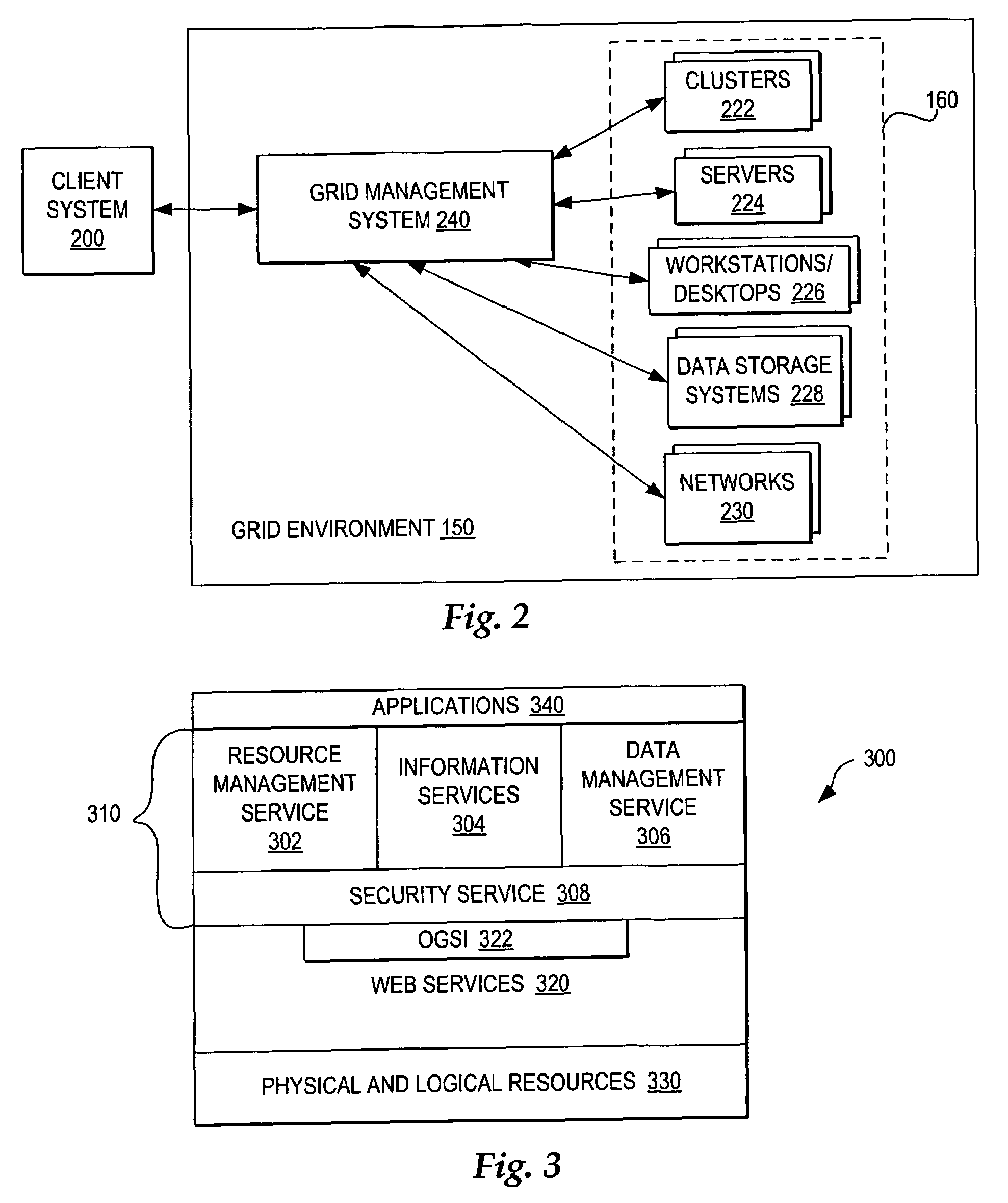Automatically building a locally managed virtual node grouping to handle a grid job requiring a degree of resource parallelism within a grid environment
a virtual node and grid environment technology, applied in the field of grid computing, can solve the problems of grid standards that do not solve all the problems associated, limit the method of improving the efficiency of response times in a network, and increase the cost of each resource nod
- Summary
- Abstract
- Description
- Claims
- Application Information
AI Technical Summary
Benefits of technology
Problems solved by technology
Method used
Image
Examples
Embodiment Construction
[0025]Referring now to the drawings and in particular to FIG. 1, there is depicted one embodiment of a computer system which may be implemented in a grid environment and in which the present invention may be implemented. As will be further described, the grid environment includes multiple computer systems managed to provide resources. Additionally, as will be further described, the present invention may be executed in a variety of computer systems, including a variety of computing systems, mobile systems, and electronic devices operating under a number of different operating systems managed within a grid environment.
[0026]In one embodiment, computer system 100 includes a bus 122 or other device for communicating information within computer system 100, and at least one processing device such as processor 112, coupled to bus 122 for processing information. Bus 122 may include low-latency and higher latency paths connected by bridges and adapters and controlled within computer system 1...
PUM
 Login to View More
Login to View More Abstract
Description
Claims
Application Information
 Login to View More
Login to View More - R&D
- Intellectual Property
- Life Sciences
- Materials
- Tech Scout
- Unparalleled Data Quality
- Higher Quality Content
- 60% Fewer Hallucinations
Browse by: Latest US Patents, China's latest patents, Technical Efficacy Thesaurus, Application Domain, Technology Topic, Popular Technical Reports.
© 2025 PatSnap. All rights reserved.Legal|Privacy policy|Modern Slavery Act Transparency Statement|Sitemap|About US| Contact US: help@patsnap.com



